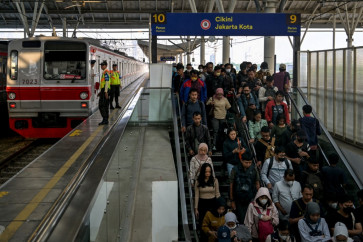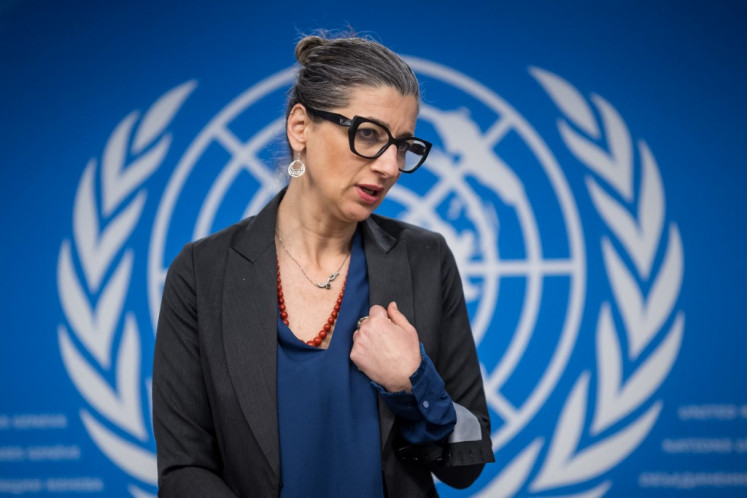Popular Reads
Top Results
Can't find what you're looking for?
View all search resultsPopular Reads
Top Results
Can't find what you're looking for?
View all search resultsScience boosts rice yields
Yogyakarta's School of Agricultural Technology at Gadjah Mada University (FTP UGM), together with farm groups from across the province, have discovered a new rice planting system they call the System of Rice Intensification (SRI)
Change text size
Gift Premium Articles
to Anyone
Yogyakarta's School of Agricultural Technology at Gadjah Mada University (FTP UGM), together with farm groups from across the province, have discovered a new rice planting system they call the System of Rice Intensification (SRI).
Besides using less water, the SRI method is also environmentally friendly as it uses 50 percent less in chemical fertilizers. Production costs are decreased because fewer seedlings are used but yields are higher compared to conventional planting patterns.
The conventional method is to plant 25-day-old seedlings at a depth of five centimeters, spaced 10 to 25 cm apart and with several seedlings in a single hole.
The SRI uses seedlings less than 15 days old, planted at a depth of between two and three cm, spaced at least 25 cm apart and a single seedling to a hole.
Researcher Sigit Supadmo, connected with the SRI planting system at the FTP UGM, said the method had been tested since 2005. It has been tested in Malang, East Java, besides across Yogyakarta.
According to Sigit, it is a breakthrough in rice cultivation and done only by altering plant, water and nutrient management. This system also saves water, making it applicable in areas prone to water shortage.
The main goal of the system is to boost yields but remain environmentally friendly.
"Yields will increase and food self-reliance can be achieved," Sigit said.
A farmer in Kulonprogo, Nuryanto, said he had been able to save up to 50 percent in production costs since he began using the SRI planting pattern.
He uses a maximum of only 10 kilograms of seedlings per hectare, compared to between 30 and 50 kg when using the conventional planting method.
"I can save up to 50 percent in chemical fertilizers. I only need 25 kg to fertilize a 1,000 square meter plot now, compared to 50 kg earlier.
"However, each 1,000 m2 must be dispersed with 1,000 kg of urea which I can easily obtain from the cattle stall," he said.
The SRI system also conserves water because irrigation is only required during planting and when the paddy is between 10 and 20 days old.
"I use 40 percent less water," Nuryanto said.
Another farmer in Sleman, Subadi, said the SRI system was beneficial for farmers because they could reap more yields. Besides lower production costs, harvests also increase.
Yields increase because the 25 cm distance between each plant allows it to grow optimally and produce more stalks.
The conventional method only yields an average of 5.4 tons of dried unhusked rice per hectare, compared to the SRI system which can produce up to 11.5 tons per ha.
Despite the advantages, Subadi, Nuryanto or even Sigit acknowledged there were problems in the field, especially in changing the farmers' conventional cultivation culture.
"Even though yields are good, many farmers are still concerned the plants will topple over because they are not planted deep enough, despite the fact that planting them that way produces stronger roots and plants," Nurayanto said.
Lasiyo, a farmer in Bambanglipuro, Bantul, expressed doubts that the SRI method would have greater yields.
"It's inconceivable that plants planted wide apart can yield more. Conventional farmers don't believe in it, even with proof.
"The government should continuously conduct campaigns and familiarize farmers with it because it takes a long time to change old habits," Lasiyo said.










